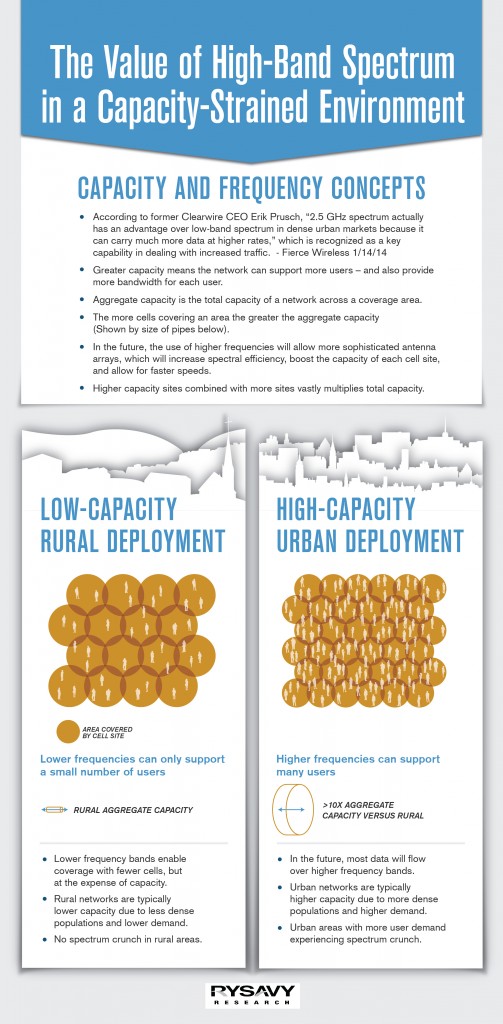Presenting the Technical Facts – High-Band vs. Low-Band Spectrum Deployment in Today’s Spectrum-Constrained Environment
It’s said so often that many have accepted it as a truism: “Low-band spectrum is inherently superior. High-band is inferior, undesirable and expensive.” This is one of things that everybody just knows, right? Not so fast. This claim fails to account for the demands of macro/microcell engineering, the evolution of technology (particularly with LTE) and for the actual characteristics of high-band frequencies, especially in urban environments. The math is simple: Once you’ve achieved basic coverage, you’re concerned with performance. As broadband traffic increases, a network with greater capacity can support more users, and provide each user with more bandwidth. As Clearwire CEO Erik Prusch said in an article in Fierce Wireless: “2.5 GHz [high-band] spectrum actually has an advantage over low-band spectrum in dense urban markets because it can carry much more data at higher rates.”
The graphic below, created by wireless technology analyst Peter Rysavy, illustrates this phenomenon crisply. Yes, lower frequency spectrum enables coverage with fewer cells, but the network can only support a small number of users in the coverage area. But lower frequencies provide no benefit in dense urban areas because cells need to be small for capacity reasons, thus operators can use either low or high frequencies. Moreover, higher frequencies facilitate the use of more advanced smart antennas, such as massive MIMO, in the future, which will increase spectral efficiency, and thus the capacity of each cell. More cells, each with greater capacity, translates to networks with far greater capacity.
Where does this matter? In cities, where the spectrum crunch is most pronounced and capacity is increasingly at a premium. Check it out.
Graphic by Peter Rysavy, President of Rysavy Research and contributor to High Tech Forum, illustrating the value of high band spectrum in capacity-strained environments, a key consideration in addressing the spectrum crunch.





“2.5 Hz [high-band] spectrum actually has an advantage over low-band spectrum in dense urban markets because it can carry much more data at higher rates.”
Do you mean 2.5 GHz?
Yes.
Same argument applies to schemes to use unlicensed TV white space in urban areas. One could, but one might want to use a higher band instead.
Hi Michael,
You quoted Erik Prusch, former CEO of Clearwire, from an article that appeared in FierceWireless. But you didn’t give us credit. Here’s the link the original article. http://www.fiercewireless.com/story/former-clearwire-ceo-prusch-sprint-will-have-advantage-25-ghz-spectrum/2014-01-14
Hi Sue, thanks for pointing that out. We added the citation!